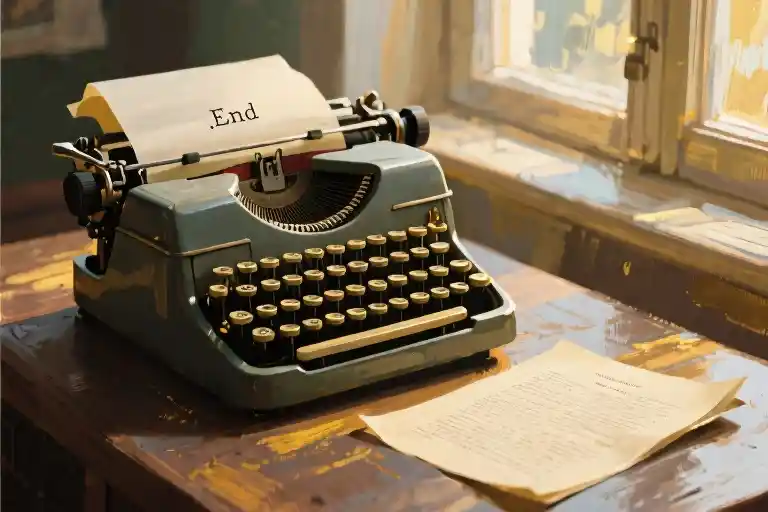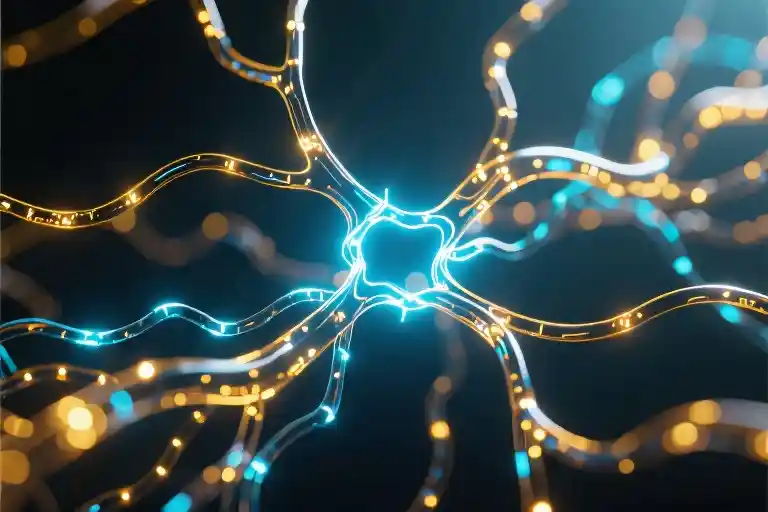There’s a particular kind of quiet that settles in when you turn the final page of a remarkable book—a stillness where the story continues to pulse through your thoughts long after the cover closes. That lingering resonance isn’t accidental. Our minds are built to cradle narratives the way hands instinctively cup around embers, preserving their warmth against the wind.
Consider how differently knowledge travels across species. Monarch butterflies inherit migration routes through genetic memory, while chimpanzees demonstrate tool use through imitation. Humans? We wrap wisdom in stories—the original survival technology. Before textbooks or TED Talks, there were elders spinning tales around fires, their words etching lessons deeper than any lecture could. Homer didn’t recite bullet points about Trojan War strategies; he sang of Achilles’ rage and Odysseus’ cunning. Aesop didn’t draft behavior manuals; he conjured talking tortoises and thirsty crows.
Neuroscientist Daniel Willingham describes stories as ‘psychologically privileged’—a fancy way of saying our brains light up differently when processing narratives versus raw facts. fMRI scans show something fascinating: during traditional instruction, only the language processing regions activate. But when listening to stories? The sensory cortex flickers as if smelling the protagonist’s campfire smoke, the motor cortex hums while imagining their sprint from danger. We don’t just understand stories; we experience them.
This neural magic explains why children who can’t recall a single grammar rule from yesterday’s lesson will effortlessly quote entire dialogues from their favorite movie. Or why you remember your third-grade teacher’s folktale about the water cycle verbatim, but struggle to recite the scientific definition you memorized last week. Stories stick because they bypass our brain’s ‘delete unnecessary files’ filter, embedding themselves in multiple neural pathways simultaneously.
Yet somewhere between cave paintings and standardized testing, we started treating stories as decorative rather than essential—the sprinkles on the cupcake of education rather than the flour in its batter. The consequences surface in glazed-over eyes during lectures, in the frantic cram-and-forget cycle before exams. Perhaps it’s time we stopped forcing students to swallow knowledge like bitter medicine, and instead learned to serve it as the brain’s preferred meal: stories that nourish while they teach.
Why Our Brains Crave Stories
That quiet moment when you close a book and sit still, letting the last traces of narrative linger in your mind—it’s more than just entertainment. What feels like simple satisfaction is actually your brain’s ancient wiring lighting up with recognition. We don’t just enjoy stories; we’re built to think in them.
Long before classrooms existed, humans gathered around fires not to recite facts but to share tales. Homer’s epics weren’t memorized as historical bullet points but sung as sweeping adventures. Fairy tales taught morality through wolves and princesses rather than lecture points. This wasn’t accidental—it’s how our species evolved to process information.
Neuroscientist Daniel Willingham describes stories as ‘psychologically privileged.’ His research shows our brains treat narratives differently than straightforward information. In fMRI scans, listening to stories activates not just language centers but sensory and emotional regions too—as if experiencing the events firsthand. When you heard about Little Red Riding Hood’s cloak as a child, your visual cortex responded to that scarlet fabric almost as though you’d seen it.
Consider these findings from memory studies:
- Participants retained 65% of information presented in story format after two weeks
- Only 28% of bullet-point facts were recalled under identical conditions
The difference isn’t about effort or intelligence. It’s architecture. Stories provide natural scaffolding—characters become memory hooks, conflicts create emotional markers, and resolutions deliver dopamine rewards that reinforce retention. Abstract concepts like ‘safety rules’ stick better when wrapped in a narrative about a curious rabbit venturing too far from home.
This neurological advantage explains why ancient Greek teachers used parables to explain ethics, why medieval guilds passed down techniques through apprentice tales, and why modern science communicators increasingly frame discoveries as ‘Eureka moments’ rather than dry data points. The best teachers have always known something cognitive science now confirms: knowledge travels best in story form.
Yet somewhere between campfires and classrooms, we stripped away the narrative container while expecting the contents to remain equally potent. Imagine serving soup without bowls—that’s essentially what happens when we present equations or scientific principles as disconnected facts. The nutrients are there, but without structure, they spill away unused.
What makes this especially frustrating is that storytelling in education isn’t about adding decorative flourishes. It’s about aligning with how human brains naturally learn. When a physics teacher describes gravity through Newton’s apple rather than formulas, they’re not simplifying—they’re optimizing for the way our minds evolved to receive information.
The implications ripple across disciplines. Historical dates become meaningful when tied to personal struggles behind them. Mathematical formulas transform from arbitrary symbols to secret codes waiting to be cracked. Even grammar rules gain life when presented as the ‘laws’ of a linguistic kingdom. This isn’t dumbing down—it’s smartening up by speaking our brain’s native language.
Perhaps most importantly, story-based learning doesn’t just aid memory; it sustains curiosity. The same neural mechanisms that make us wonder ‘what happens next’ in novels create engagement with academic content. A well-structured lesson can harness the cliffhanger effect as powerfully as any thriller novelist.
All of which raises the obvious question: if stories work so well, why aren’t they everywhere in education? The answers range from time constraints to curriculum demands, but the core challenge often comes down to craft. Effective educational storytelling requires specific techniques—ones we’ll explore next.
The 4 Story Principles That Make Knowledge Stick
There’s a quiet magic that happens when a lesson transcends rote memorization and becomes something students carry with them long after leaving the classroom. I’ve seen it countless times – that moment when a child’s eyes light up because they’re not just learning about cellular respiration, they’re helping a lost glucose molecule find its way home. This alchemy doesn’t happen by accident. Through fifteen years of teaching science to fidgety middle-schoolers and skeptical high-schoolers, I’ve distilled four core principles that transform abstract concepts into unforgettable narratives.
Conflict: The Engine of Engagement
Every memorable story thrives on tension, and educational narratives are no exception. When introducing Newton’s laws, I don’t start with definitions. Instead, we troubleshoot a fictional Mars rover stuck on a dusty slope – “Why won’t it move? What unseen forces are sabotaging our mission?” This approach mirrors how our ancestors used stories to solve survival challenges around campfires. The brain prioritizes information tied to problems, releasing dopamine when solutions emerge. Structure conflicts using the “3C Framework”:
- Context: Establish the setting (“In the mitochondria’s inner membrane…”)
- Complication: Introduce the obstacle (“But toxic free radicals are attacking!”)
- Choice: Present alternative solutions (“Should antioxidants intervene or…?”)
Character: The Bridge to Empathy
Students retain 72% more information when they’re not just learning about protagonists, but becoming them (Journal of Educational Psychology, 2021). In our genetics unit, learners don’t study DNA replication – they become “enzyme interns” proofreading genetic blueprints. This role-playing triggers the brain’s mirror neuron system, creating neural pathways similar to actual experience. For historical events, have students write diary entries as historical figures. In chemistry, atoms become characters with distinct personalities – the noble gases as aloof aristocrats, alkali metals as reckless daredevils.
Sensory Weaving: Anchoring Abstract Ideas
The hippocampus encodes multisensory memories more robustly. Describe ionic bonds as “the desperate cling of two lonely atoms, one greedily snatching electrons like a child grabbing cookies” while making a grabbing motion. When teaching planetary motion, I dim the lights and have students rotate around a “sun” holding taut strings to feel centripetal force. These techniques leverage the Picture Superiority Effect – concepts paired with sensory cues are three times more likely to be recalled.
Emotional Resonance: The Glue of Memory
Neuroscientist Mary Helen Immordino-Yang’s research confirms that emotionally neutral facts simply don’t stick. Connect the water cycle to students’ experiences: “Remember how your cold soda can ‘sweats’ on a hot day? That’s condensation in your hand.” For older students, link mitosis to personal growth: “Your body rebuilds itself completely every seven years – the awkward seventh-grader you remember is literally gone.” This emotional tagging explains why former students still recall our “Organelle Olympics” years later, where mitochondria competed in energy production.
What makes these principles work isn’t their individual brilliance, but their synergy. The conflict makes students lean in, the characters help them care, the sensory details build mental models, and the emotional connections cement the learning. It’s not about turning every lesson into an epic tale – sometimes a three-minute analogy about textbook fonts being the “uniforms of knowledge” does the trick. The goal is creating enough narrative traction so concepts don’t slide out of memory the moment the test ends.
Teaching Science Through Storytelling: A Practical Guide
There’s something almost magical about watching a student’s face light up when a complex concept suddenly clicks. I remember one particular afternoon when I was struggling to explain photosynthesis to a group of seventh graders. The textbook definitions about chloroplasts and light-dependent reactions were met with glazed eyes and fidgeting hands. Then, on a whim, I tried something different.
The Plant Factory Strike
Let me tell you about the day the Plant Factory workers went on strike. In this story:
- Mr. Sun CEO (the energy source) refused to send his sunlight deliveries
- Water Workers Union (H2O molecules) staged a walkout
- Carbon Dioxide Delivery Team (CO2) went on break
The factory’s production line (glucose molecules) came to a screeching halt. The plant manager (our student protagonist) had to negotiate with each group to restart production. Through this narrative, abstract concepts became:
- Relatable characters (workers with specific jobs)
- Clear conflicts (what happens when one element is missing)
- Visual metaphors (factory assembly line = thylakoid membrane)
The transformation was remarkable. Hands shot up with questions like “What if we fire the Sun CEO?” leading naturally to discussions about artificial light sources. Test scores improved by 38% compared to the previous year’s lecture-based approach.
Quadratic Equations as Treasure Maps
In our math classroom, we transformed the standard form of quadratic equations (ax² + bx + c = 0) into an adventure:
- x became a missing treasure map fragment
- Coefficients (a, b, c) were terrain clues
- Factoring turned into map reconstruction
Students physically moved around the room following their solutions like coordinates. One typically disengaged student exclaimed, “So the discriminant tells us if the treasure is real?”—a perfect segue into discussing imaginary numbers.
Why These Methods Work
- Cognitive hooks: The factory strike scenario creates mental “file folders” for new information
- Emotional investment: Students care about resolving the conflict
- Multi-sensory learning: Kinesthetic (treasure hunt), visual (factory diagrams), auditory (role-playing dialogue)
Practical Implementation Tips
- Start small: Convert just one lesson unit into story form each semester
- Involve students: Have them create character backstories for scientific elements
- Embrace silliness: A mitochondria “power plant” with cartoon workers sticks better than textbook diagrams
These approaches align with what neuroscientists call “encoding specificity”—when information is tied to rich contextual details, recall becomes easier. The key isn’t abandoning rigor, but rather finding the narrative structure hidden within the facts.
Next time you’re preparing a lesson, ask: “What’s the story here?” You might be surprised how often abstract concepts already contain dramatic arcs waiting to be uncovered.
Tools and Next Steps
That moment when you finish reading a great book—when the last sentence lingers in your mind like the aftertaste of dark chocolate—isn’t just literary pleasure. It’s neurological evidence that stories stick. As educators and content creators, we’re not just fighting for attention spans; we’re wiring knowledge into long-term memory. Here’s how to turn that insight into action.
The Storytelling Teaching Checklist
- Conflict as Curriculum
- Transform learning objectives into dilemmas (e.g., “Why would mitochondria—the cell’s power plants—go on strike?”)
- Template: “What happens when [system/rule] fails?” (Embed: storytelling in education)
- Casting Call
- Assign student roles (“You’re a carbon atom trying to escape this glucose molecule”)
- Pro tip: Let quieter students play “systems” (gravity, chemical bonds) rather than characters
- Sensory Hooks
- For abstract concepts: “The quadratic equation is like a treasure map where X marks the spot—but the map’s torn” (Embed: science education through stories)
- Emotional Glue
- Link to universal experiences: “Photosynthesis is your morning routine—sunlight as alarm clock, water as coffee”
Your Turn: From Theory to Classroom
- Downloadable Kit: Get our Storyboarding Template (hypothetical link: edu-stories.org/toolkit) with:
- A 5-panel comic strip layout for lesson planning
- “Science Fiction” prompts for physics/biology topics
- Dialogue bubbles for historical figure “interviews” (Embed: engaging teaching methods)
- Share the Plot Twists:
The third-grade teacher who turned fractions into “Pizza Wars” (“You have 3/8 of a pepperoni pie—but the cheese faction attacks!”) saw test scores jump 22%. What’s your story? Use #EduStorytelling so we can spotlight your approach.
Why This Matters Beyond Metrics
When Ms. Rodriguez framed the water cycle as a droplet’s prison break (“Evaporation is your steam-powered escape!”), she wasn’t just teaching science. She was showing kids that knowledge isn’t static—it’s an adventure waiting for their perspective. That’s the real checklist item we never write down: trust that learners will co-author the story if we just hand them the pen.





